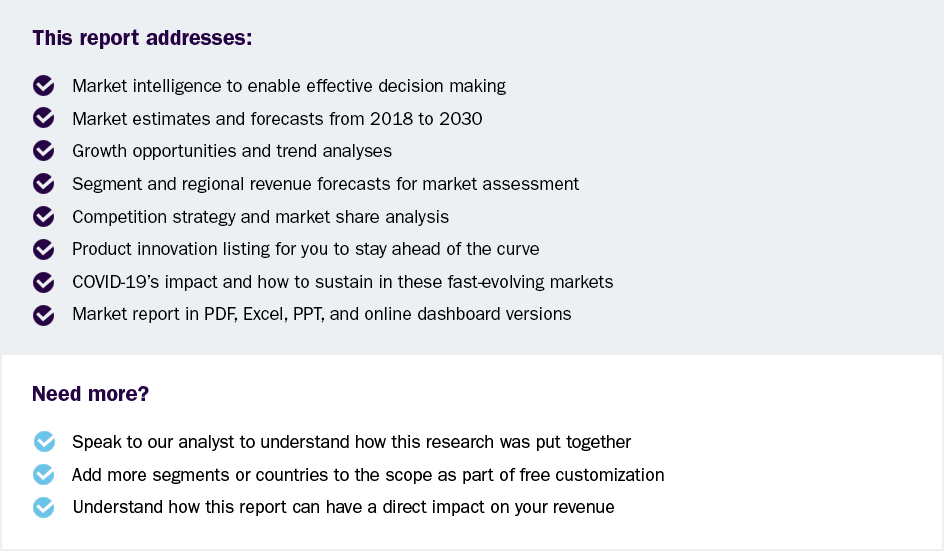Wildlife Health Market Size To Reach $4.67 Billion By 2030
Wildlife Health Market Growth & Trends
The global wildlife health market size is expected to reach USD 4.67 billion by 2030, registering a CAGR of 9.89% over the forecast period, according to a new report by Grand View Research, Inc. The demand for zoonotic disease prevention, sustainable ecosystem management, and animal conservation are driving the market. The market landscape is being shaped by cutting-edge technology, greater investment, and the adoption of the ‘One Health’ strategy. The quadripartite Organizations - FAO (Food and Agriculture Organization, UN, WOAH (World Organization for Animal Health), WHO (World Health Organization), and UNEP (United Nations Environment Programme) - collaboratively developed ‘One Health Joint Plan of Action (2022-2026)’ to enhance the conservation of wildlife management and overall animal & human wellbeing.
The effective management of wildlife health requires cooperation amongst stakeholders, including governmental organizations, academic institutions, conservation groups, and local populations. Innovative ideas and enhanced conservation outcomes can result from the creation of platforms for information sharing and cooperation. For instance, in September 2021, a cooperative agreement was signed by Virbac and Jectas Innovators for the development of animal health vaccines. The emergence of COVID-19 has emphasized the value of researching zoonotic illnesses or infections from wild animal reservoirs. To stop future outbreaks and safeguard the well-being of humans and wildlife, it is essential to look into the origins, transmission routes, and potential hosts of zoonotic illnesses.
Although the vulnerability of many wildlife species to COVID-19 has not been thoroughly investigated, some preliminary study suggests that some animals, like minks, may be able to contract the virus. COVID-19 outbreaks in mink farms occurred in a number of nations, which necessitated the mass killing of afflicted animals to stop the virus's spread. Initiatives to promote veterinary care for wild animals in zoos, sanctuaries, and national parks, among others, have been implemented by various wildlife resources and organizations. For instance, the World Wildlife Fund (WWF) has been collaborating with partners from nearly 100 countries to sustain the healthcare of wildlife and people. The organization has over 5 million members registered globally, with over 1.3 million in the U.S. Similarly, the Association of Zoos and Aquariums (AZA) funds more than 2,500 wildlife conservation projects in over 100 countries worldwide. These measures are largely boosting the growth of the market.
 Request a free sample copy or view report summary: Wildlife Health Market Report
Request a free sample copy or view report summary: Wildlife Health Market Report
Wildlife Health Market Report Highlights
-
The market was estimated at USD 2.21 billion in 2022 and is anticipated to grow significantly at a CAGR of 9.89% over the projected period
-
Themammals animal type segment generated the largest revenue share of about 45% in 2022
-
The medicine product segment dominated in 2022. According to the guidelines published by the American Association of Zoo Veterinarians, every zoo and aquarium must have on-site veterinary pharmacies to routinely supply basic veterinary drugs, such as antibiotics, anesthetics, emergency resuscitative medications, analgesics, fluids, anthelmintics, and tranquilizers
-
The injectable route of the administration segment held the dominant share of over 45% in 2022. The veterinarians and wildlife officers are mostly involved in tranquilizing or sedating animals in national parks, sanctuaries, and zoos, typically using intramuscular or intravenous injections
-
The zoos end-use segment held the dominant market share of over 30% in 2022. The substantial share is owing to the strict standards & guidelines followed in the zoological parks with employed trained veterinarians to offer medical services for captive animals
-
North America held more than a 30% share of the market in 2022. On the other hand, the Asia Pacific region is anticipated to grow at the fastest CAGR of approximately 11% over the projected period
Wildlife Health Market Segmentation
Grand View Research has segmented the global wildlife health market on the basis of animal type, product, route of administration, end-use, and region:
Wildlife Health Animal Type Outlook (Revenue, USD Million, 2018 - 2030)
-
Mammals
-
Birds
-
Fish
-
Reptiles
-
Amphibians
Wildlife Health Product Outlook (Revenue, USD Million, 2018 - 2030)
-
Medicine
-
Immobilizing Drugs
-
Pharmaceutical Drugs
-
Vaccines
-
Other Medicines
-
-
Equipment & Consumables
Wildlife Health Route of Administration Outlook (Revenue, USD Million, 2018 - 2030)
-
Oral
-
Injectable
-
Others
Wildlife Health End-use Outlook (Revenue, USD Million, 2018 - 2030)
-
Zoos
-
Wildlife Sanctuaries
-
Wildlife Rescue & Rehab Centers
-
Others
Wildlife Health Regional Outlook (Revenue, USD Million, 2018 - 2030)
-
North America
-
U.S.
-
Canada
-
-
Europe
-
U.K.
-
Germany
-
France
-
Italy
-
Spain
-
-
Asia Pacific
-
China
-
Japan
-
India
-
Australia
-
South Korea
-
-
Latin America
-
Brazil
-
Mexico
-
-
MEA
-
South Africa
-
List of Key Players in the Wildlife Health Market
-
Boehringer Ingelheim International GmbH
-
NexGen Pharmaceuticals
-
Virbac
-
Dong Bang Co., Ltd.
-
Pneu-Dart Inc.
-
DANiNJECT
-
Genia
-
Wedgewood Pharmacy
-
The Pet Apothecary
-
Taylors Pharmacy

